Heavy rain and the first cold weather have hit Ukraine in the past few weeks. A terrible storm with blizzards swept across the country on 26 November, forcing traffic to a halt in almost the entire country’s south.
Naturally, these weather conditions have had an impact and will further affect the nature of the hostilities.
More and more voices are talking about poor road conditions and Russian attacks on energy infrastructure.
Advertisement:
Russia attacked Ukraine with a record number of Shahed kamikaze UAVs on the night of 24-25 November, with the bulk of the attack directed at Kyiv. Those days may be considered the starting point for the notional beginning of the winter campaign.
The onset of winter would typically slow down the pace of hostilities. However, last year proved that this is not always the case everywhere.
Ukrainska Pravda explores how winter may change the nature of the war, what factors will affect the actions of the warring parties, and what difficulties the soldiers will face.
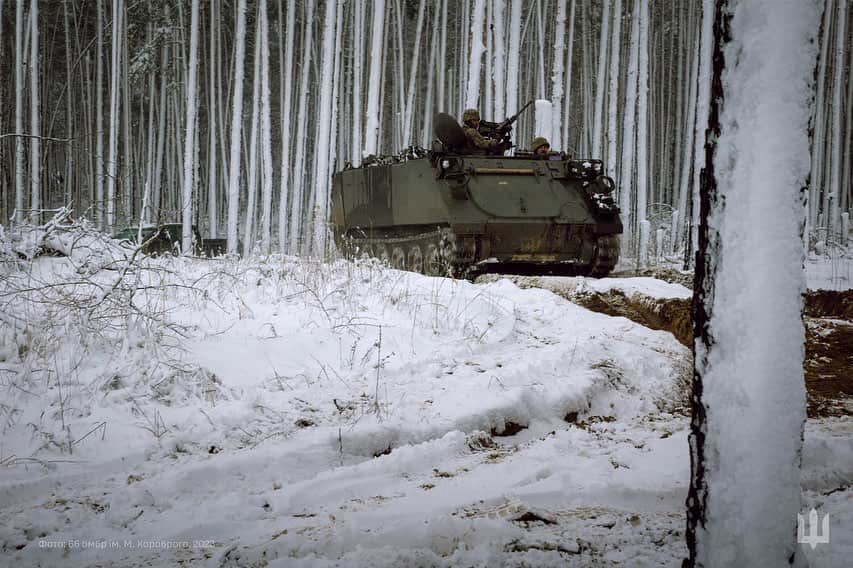
ALL PHOTOS: UKRAINIAN GENERAL STAFF
Climate
Weathermen usually don’t like to speculate very far in advance, but some long-term forecasts suggest that the coming winter may be at least as warm as the last one, or at least no colder.
In particular, the Ukrainian Hydrometeorological Centre expects frost in December, with the average daily temperature at around 1-1.5 degrees Celsius above the average for the period (-1.8°C). Meanwhile, the forecast by the Wisemeteo service suggests that January and February will likewise be warmer than last year by an average of 2 degrees Celsius.
However, the details are crucial to any forecast, especially when it comes to a country as vast as Ukraine.
Advertisement:
Whereas temperatures will play a major role in Kyiv, Lviv, Vinnytsia and other cities not directly on the front line, amid likely Russian attacks on the energy sector, other aspects of the weather are more important for areas with active hostilities.These primarily include geographical and climatic factors.
The core areas in the current phase of the war are Zaporizhzhia, Kharkiv and Kherson oblasts and Donbas.
Parts of Zaporizhzhia and Kherson oblasts, where the active phase of the fighting is currently underway, tend to have relatively warm but windy winters, which may hamper the accuracy of artillery. Considering that the terrain there is virtually flat, camouflaging may also be a challenge.
On the other hand, Kharkiv and Donbas have a rather diverse climate and a landscape that ranges from hilly terrain, rivers and ravines in Slobozhanshchyna to the steppes near the Donetsk region [Slobozhanshchyna or Sloboda Ukraine is a historical region located in northeast Ukraine, consisting mainly of modern Kharkiv, Luhansk and Sumy oblasts – ed.]. This gives more room for manoeuvre than in the south, and gives the defending side some advantage.
Rainfall is another critical factor that affects the course of the fighting. The cities of Melitopol, Berdiansk and the left bank of Kherson Oblast do not tend to get much precipitation. Still, the temperature will play a significant role in these areas, bearing in mind that the warmer, the better.
Forecasts by Wisemeteo suggest that winter in Donetsk and Kramatorsk will be wetter than last year, which may significantly impact the fighting in Donbas.
Once the temperature drops below zero, it is far more likely for parts of the war zone to face challenging situations, such as armoured vehicles bogged down, mud and ice water in the trenches.
Advertisement:
It would seem that in such conditions, it is virtually impossible to advance. However, it must be borne in mind that the warring parties are engaging less in “armoured fists” (military formations of armoured and mechanised forces intended to break through the adversary’s defences – ed.) and instead attacking more often with small mobile groups rather than large formations. This tactic is considered more “wintery”. Therefore, no substantial shifts in the pattern of offensive actions will occur.
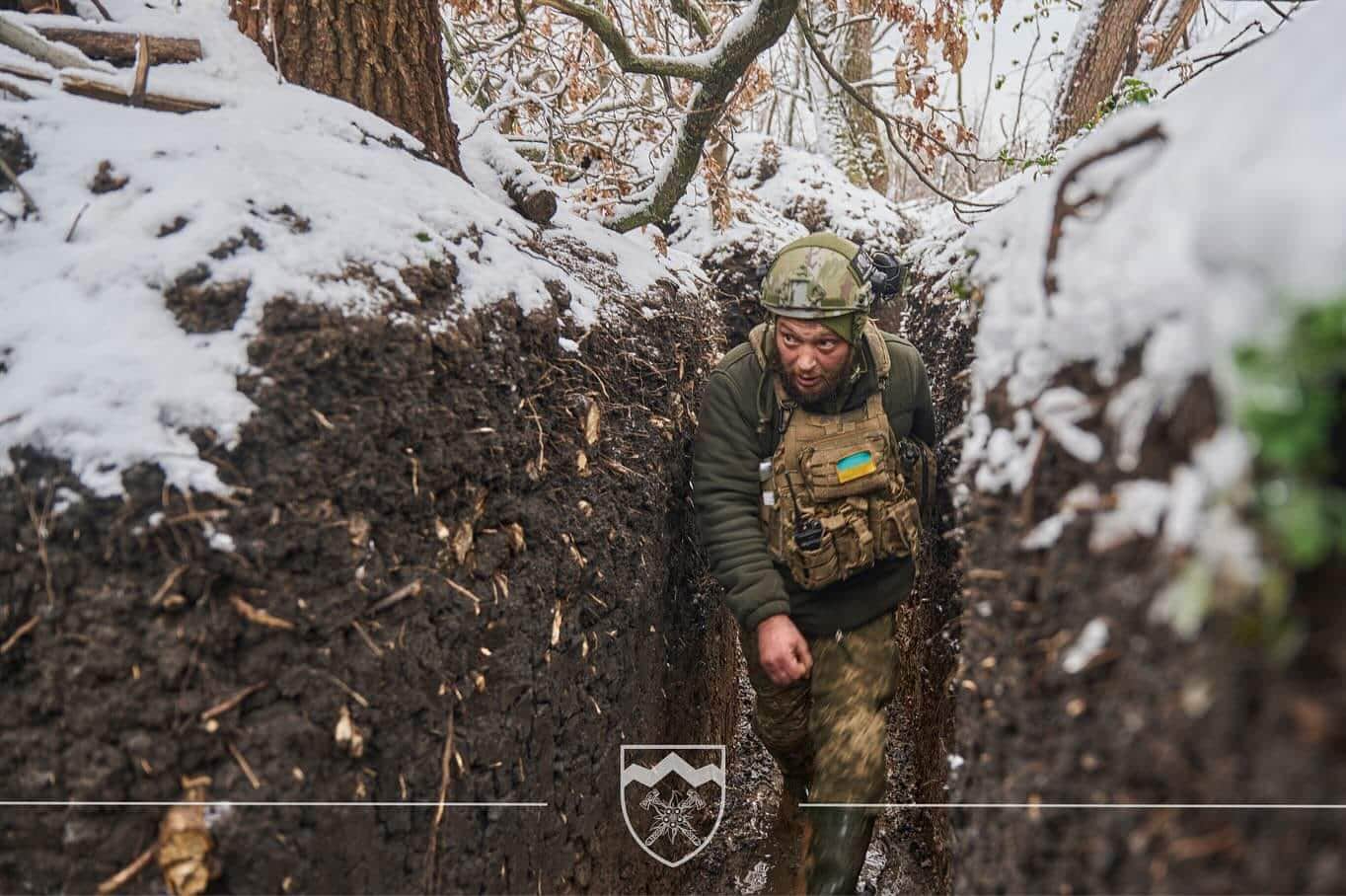
PHOTO: OPERATIONAL COMMAND ZAKHID (WEST)
Snow, frost, military vehicles and mice
Snow is a problem that needs to be kept in mind during combat operations. First, because vehicles cannot be employed in the snow. Even tracked equipment stops dead.
Second, because snow can be both a camouflage and a detection feature. Military movements cannot go unnoticed because of traces. However, snow can also serve to confuse or mislead the adversary’s forces.
Another essential feature of winter is frost.
Soldiers not only need the skills to survive in low temperatures, but they also have to pay attention to a range of challenges when it comes to maintaining their weapons, clothing, equipment and positions.
Advertisement:
Military vehicles undergo seasonal maintenance, consisting of an inspection of all modules and powertrains, adjustment of vehicle controls and much more in preparation of winter operations.
“All vehicles, whether armoured or automotive, have two operational seasons: spring-summer and autumn-winter. Once the average temperature drops below +8°C, consumables must be completely replaced,” Mykola Solomakha, an armoured vehicle specialist, told Ukrainska Pravda.
Solomakha explained that this is mainly true of cooling systems that rely on water.
“The water has to be drained, and the coolants and other liquids have to be replaced with winter varieties that are cold-resistant, or with antifreeze,” explains Solomakha.
Cleaning, washing and painting the equipment, lubricating the barrels, preparing the heaters, and charging the batteries are equally crucial.
Experience has shown that there are some differences between Western-supplied and Soviet-era equipment when it comes to winter performance.
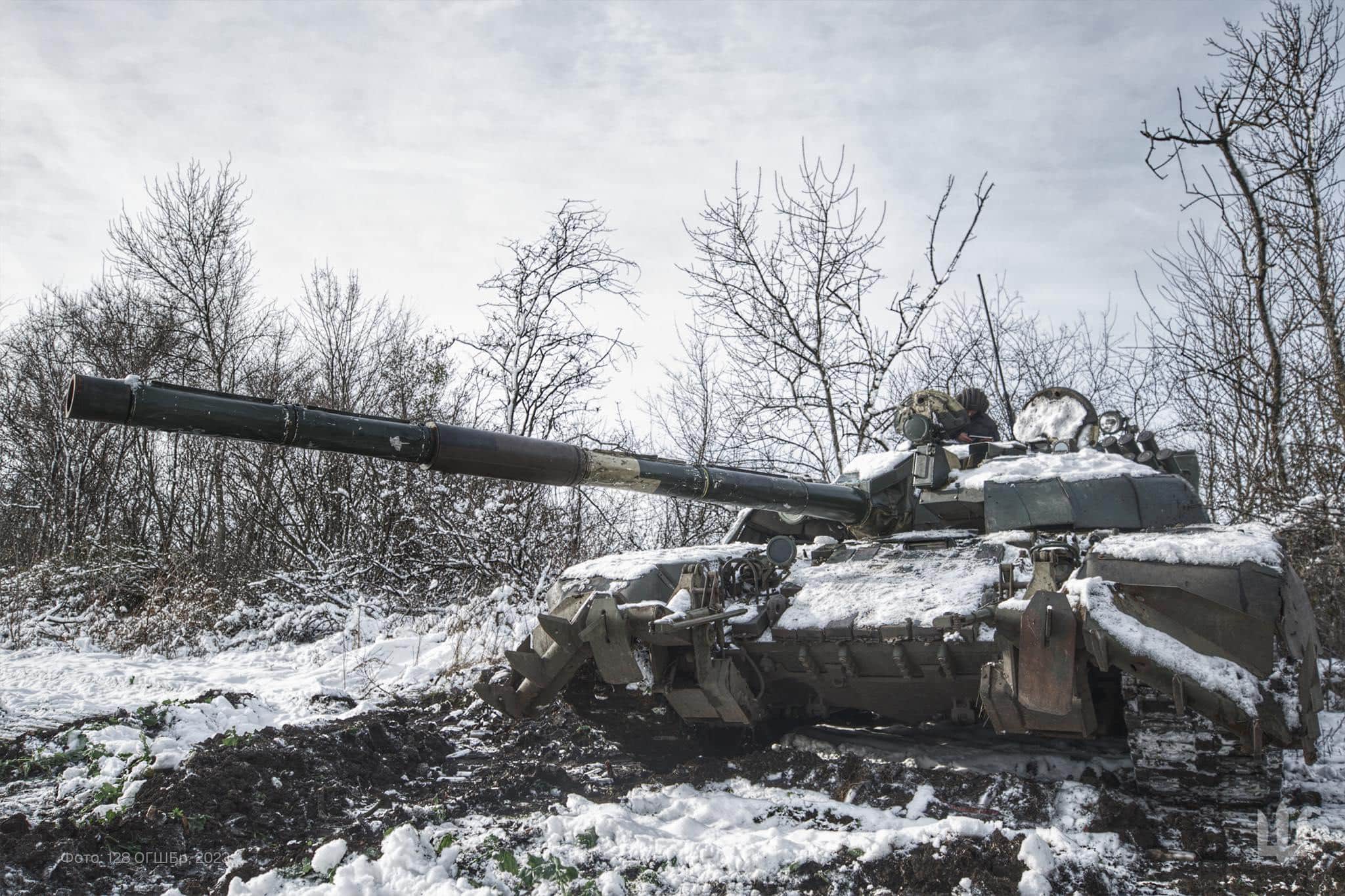
“As a matter of fact, both Western and Soviet-era equipment have a cold start mode (starting the engine at below-zero temperatures – UP). However, Western-made vehicles mostly use webasto (block heaters), whereas Soviet equipment still use torch heaters,” said Solomakha.
Autumn mud is a headache for vehicle mobility, whereas winter snow and ice make things even worse during evacuation and for carrying out equipment repairs. Although it was a very long time since Ukraine last had minus 30-degree temperatures, fixing engines at -5 degrees is not particularly comfortable.
“These are indeed major challenges. First, you can’t carry out repairs on the battlefield; you have to organise evacuation and then set up repair sites. This involves some magic, erecting roofs and installing stoves. Once upon a time, fingers on my left hand got frostbite,” Solomakha noted.
Protecting the machines from freezing is no less vital, as it can affect the efficiency of the modules, especially the batteries.
“You should arrange for separate parking spaces, prepare carpets, and cover everything with tarps or anything that preserves heat,” explained Solomakha.
Advertisement:
Maintaining comfortable temperatures also applies to personnel, both motorised and infantry units.
“There must be a sufficient stock of firewood, prepared dugouts, stoves, and appropriate cloaking so that no smoke is visible in the distance. Soldiers lose heat rather quickly in the frosty air, so their diet needs to include more high-calorie food to prevent hypothermia,” Solomakha stressed.
The onset of cold weather also brings various kinds of rodents into the dugouts and other hiding places. Mice are a significant problem, so you cannot leave anything out of sight. And if stolen food is not a big deal, then chewed wires and damage to expensive equipment are a significant loss. Not to mention that they do not let the soldiers sleep well.
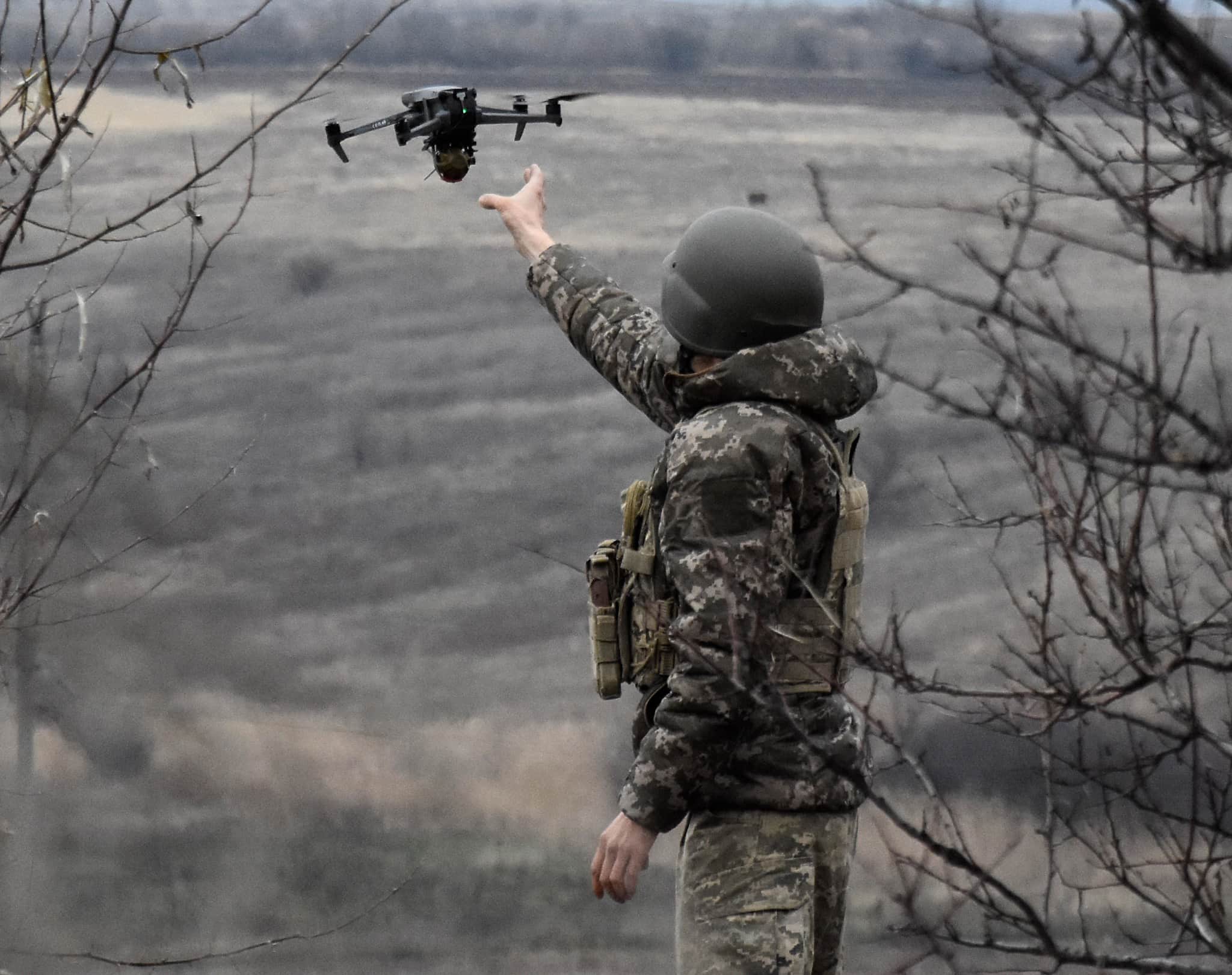
Drones, missiles, reconnaissance and artillery
Uncrewed aerial vehicles have become one of this war’s main features. This applies to both long-range attack drones, reconnaissance UAVs and first-person view (FPV) drones.
Russia launched about 1,000 long-range missiles and over 1,000 Shaheds at Ukraine’s critical infrastructure last winter.
Given current estimates of Russia’s stockpile and its obvious increase in recent months, the number of weapons fired at Ukraine is unlikely to diminish.
However, the Ukrainian Air Force believes Russia will deploy significantly more Shaheds this winter since the Russians have started producing them domestically.
Ukraine’s air defence forces have grown considerably more robust than last year, so the Russians are seeking to combine missile and drone attacks, improve camouflage, and use new composite materials in their designs.
“During the 25 November attack, a black Shahed was discovered after being downed. However, I would like to stress that this was a one-off incident, and it’s premature to suggest that the enemy is using this design en masse,” Yurii Ihnat, spokesman for Ukraine’s Air Force Command, told Ukrainska Pravda.
Ihnet noted that the Russians likely chose black to make the drone harder to see in the dark.
He emphasised that weather conditions are relevant, but not crucial, for both aircraft and long-range drones.
“Taking the recent hurricane as an example: of course, you can’t raise warplanes in such weather, and the Shaheds would simply be torn apart. However, these are rare occasions,” Ihnat added.
Ihnat further noted that the main challenges of winter are posed not by frost or cloud cover but by the temperature drop from above to below zero.
“When a drone takes off from Krasnodar Krai [Russia] in above-zero temperatures, and the temperature drops to below zero along the way, the wings freeze, and of course that will affect the drone’s performance and accuracy,” he explained.
Advertisement:
As for Iranian-made Shahed UAVs, the frost will not directly affect the flight range, as they are powered by a petrol engine. For the majority of drones on the battlefield, however, frost is an essential factor, as they mostly use lithium batteries, which can quickly drain in the cold.
Technical specifications indicate that many simpler drones, such as Mavics or FPVs, lose their charge twice as fast in cold weather. Still, there are nuances even in this case.
“Frost is not a decisive factor for the operation of FPVs, since all crews have to keep their drones warm at all times in winter. The battery heats up when the device takes off. This does not actually affect either the range or its efficiency during use,” one of the attack UAV operators deployed in Donbas explained to UP.
“There are certain additional tasks, like having to varnish certain drone boards to prevent them from being affected by precipitation,” the serviceman adds.
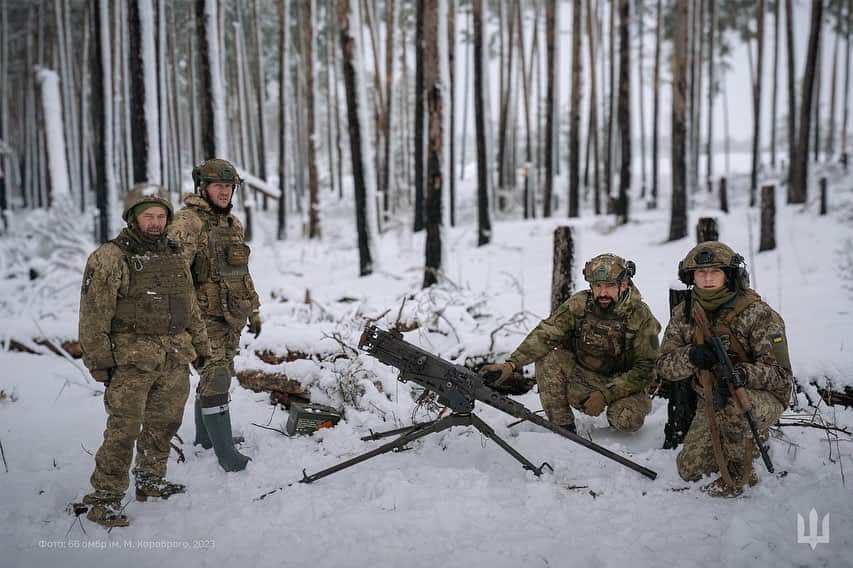
The UAV operator believes that the harshest weather conditions are not in fact at the height of winter but in the transitional autumn-winter and winter-spring periods. Cloud cover often makes weather unsuitable for tactical or army aircraft and reconnaissance or attack drones.
In clear weather, reconnaissance drones can see what’s happening in a 25-square-kilometre area. However, that range shrinks up to 5 times on cloudy days.
“Speaking of clear winter days, it can sometimes be even easier to work under those conditions. Snow provides more contrast, making it easier to identify targets,” the source emphasised.
The absence of natural camouflage, such as grass and foliage, gives reconnaissance clearer vision. Going unnoticed when there is a white desert and bare tree trunks everywhere is quite a challenge.
Moving armoured vehicles close to the contact line is sometimes complicated, nor is it easy for infantry to operate. That’s where artillery steps to the fore.
Staying behind the lines, the artillery has a little more room for manoeuvre. Therefore, in many areas, winter turns into persistent counter-battery combat, commonly referred to as “artillery duels”.
Insulation and clothing
Unless their military uniform is well prepared, soldiers obviously cannot fight for long during the winter period because of the cold.
A soldier must not only be well insulated but also have high-quality clothing ready to change quickly. For example, when socks or gloves get wet, performing combat duties is tougher, and there is a high risk of catching cold.
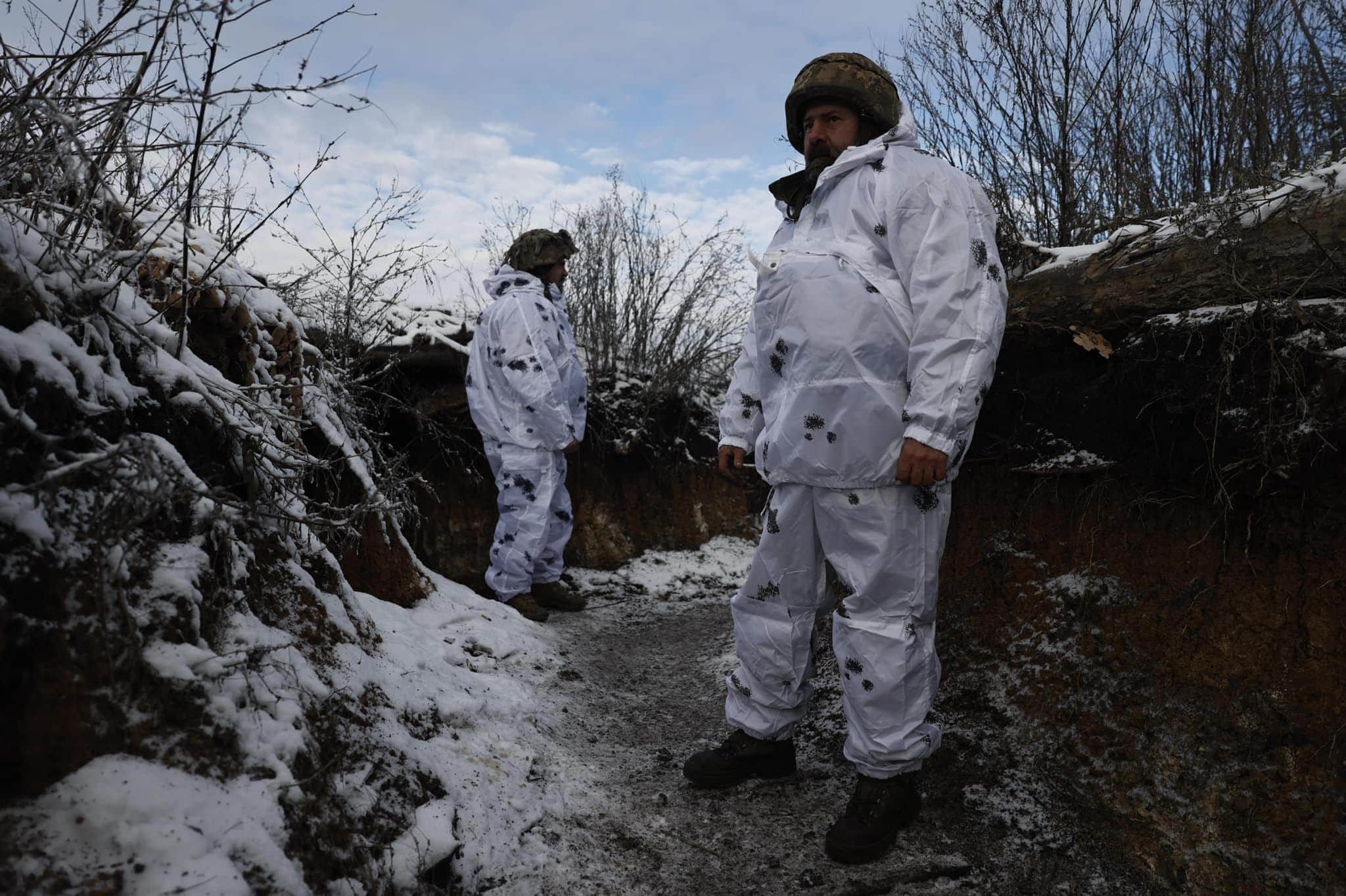
Low temperatures also significantly hamper the evacuation of the wounded.
During the warm season, if the wound is not critical, a soldier can stay on the battlefield and wait for a suitable evacuation time. But in winter, no time can be lost, or the wounded may succumb to hypothermia.
In addition to suitable clothing, the winter battlefield demands many stoves, chemical heating pads, blankets, sleeping bags and tents. Therefore, do not turn a blind eye if any of your friends defending Ukraine asks you to help with something from this list.
*****
Winter is perhaps one of the most demanding periods for combat operations. That is why the parties are trying to focus more on the defensive.
If neither side mobilises additional forces, the current situation means large-scale offensive operations on vast areas of the contact line will be impossible over the winter.
However, the weather itself can serve as both an advantage and an obstacle, since the conditions are the same for everyone. Both Ukraine and Russia are used to these climatic conditions, so one cannot say that either country is more or less prepared or accustomed to cold and snow. They will hurt everyone.
Those who have learned the right lessons from last year’s battles in the snow and are better prepared for this winter will have the upper hand.
Yevhen Buderatskyi, Ukrainska Pravda
Translation: Artem Yakymyshyn
Editing: Monica Sandor
#Snow #frost #weak #batteries #ounterbattery #fire #mice #dugouts #winter #affects #combat #operations